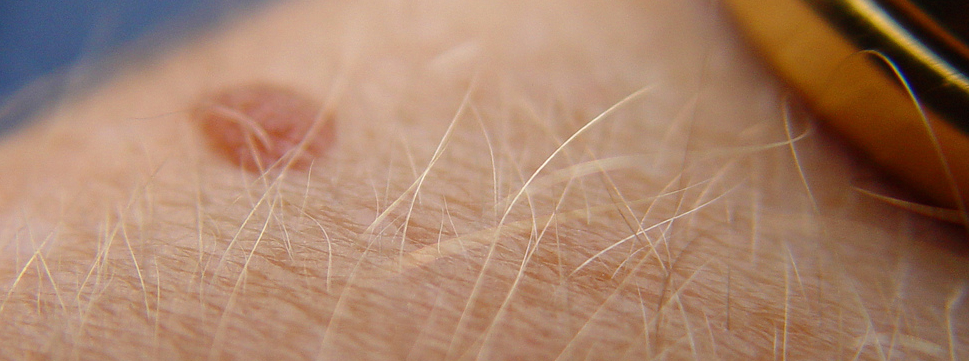Hopefully, we will be able to answer these questions for you by looking closely at the different types of melanoma and working out what is melanoma.
What is malignant melanoma?
Skin cancer comes in two main forms: Non-melanoma and malignant melanoma.
Non-melanoma
Non-Melanoma includes basal cell and squamous cell carcinoma – both of which are slow-growing and unlikely to spread to other cells in the body – making them very easy to treat. In most cases, a non-melanoma can simply be removed or watched and will require no further treatment.
This may answer your question about what is melanoma, but when it comes to malignant melanoma – read on.
Malignant melanoma
Malignant melanoma is something quite different and can affect as many as 12,000 people each year in the UK with around 2,000 people dying of the condition each year.
In Australia, the rate of diagnosis is almost 13,000 per year with around 10% dying from the disease. In New Zealand, the rates are lower (but so is the population!) with around 4,000 people diagnosed each year and 300 deaths.
In the US there are more than 76,000 cases reported each year and around 10,000 will die. Australia has the highest incidence once the population level is taken into account. Overall, melanoma is one of the most common forms of cancer to be diagnosed in all of these locations.
What does a normal mole look like?
This type of skin cancer starts within the part of the skin that gives it its pigment (which is why it affects fair skin more readily).
Exposure to the radiation of the sun leads to changes in the cells of the skin which start to rapidly multiply. This process can then spread to other parts of the body – becoming more difficult to treat.

Malignant melanoma is much more difficult to treat than non-melanoma as it has the ability to spread. But treatment is always based on how quickly cancer has been identified and therefore how far it has spread.
Localized malignant melanoma can be cut away and may require no further treatment, however, if it has spread you may require radiation treatment or drug therapies such as chemotherapy. Survival rates are good if the cancer is caught early.
How can I prevent malignant melanoma?
Now that you know what is melanoma, what is next? Checking your skin is the most important thing you can do to find malignant melanomas early. So it is important that you understand the signs of melanoma that you should point out to your doctor. These include any unusual moles that are irregular in shape or color, that are bleeding or itchy or have grown at any time over the age of 30.
You should also be aware of your own personal risk factors to prevent melanoma. These include a family history of melanoma, exposure to high degrees of sunlight in your early life (especially if you were sunburned), fair or easily burned skin and if you have more than 11 moles on one arm – this indicates that you have more than the average number of moles across your body.
Knowing how to check your moles and avoiding the harmful sun can ensure that you are unlikely to be caught out by a malignant melanoma that you didn’t know was there.
But regular checks by your doctor or a dermatologist make great sense for anyone who has any of the risk factors stated above.
Read more about Malignant melanoma symptoms